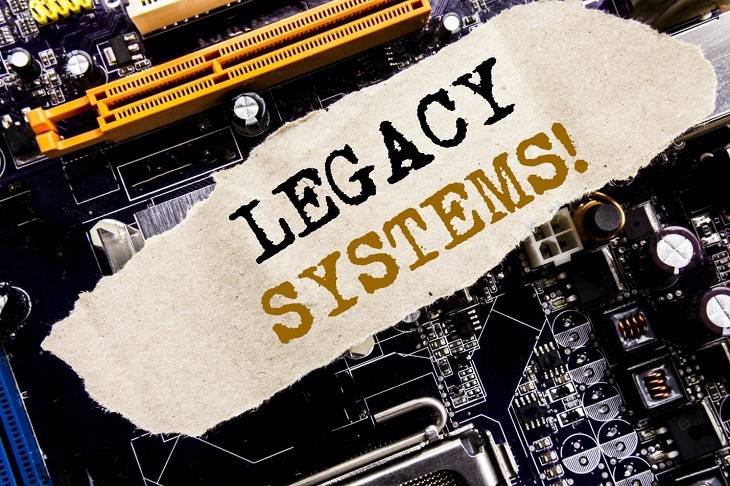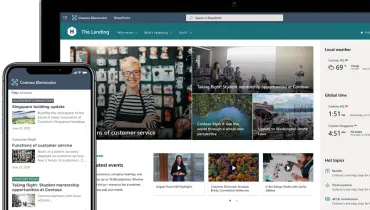How to Upgrade and Manage Legacy Software in Your Business

If your business has been around for a while, you've probably developed custom software to help with your business. The problem is that there is now better technology out there that can make your software less complicated and more maintainable.
There are plenty of reasons to keep using legacy software, but will it benefit you in the long term? Is the challenge of keeping up old code worth it?
Updating your software won't only benefit you in the short term. It will also help you stay updated in the future. If you are trying to modernize your software and don't know where to start, we've prepared a few tips to help you make the jump.
What Is Legacy Software?
Do you have a piece of software that has been there since you've been at the company? There is a good chance that it is legacy software.
But age isn't the only thing that makes software legacy. Legacy software is defined as a piece of software that is vital to a companies operations, but hard to replace or update.
This difficulty can be due to several reasons:
- Poor architecture
- Technology choice
- Poor design
- Lack of talent to maintain it
- New Requirements
Unfortunately, legacy software remains in many businesses because of the difficulty replacing it. Sometimes it does just work, and making any changes can introduce new bugs that cost your company money.
So how can you update this software with the latest tech?
Legacy Systems: A Maintenance and Upgrade Guide
Here’re a quick guide for legacy system maintenance and upgrade. Follow these steps to begin modernizing your tech stack.
1. Figure Out Which Components Are Unnecessary
If your software has been in development for a long time, chances are you have parts of it that your company doesn't use anymore. When you start to modernize your software, it's essential that you identify these parts and eliminate them.
The more variables you have when building software, the harder it is to make everything work together. Keep it simple and don't make things more complicated than they need to be.
2. Separate Your Data, Business Logic, and User Interface
Is one of your problems with old software a large codebase that has its logic combined? A solution to this is adopting an n-tier architecture. You can separate your software into the following layers:
- Presentation
- Application
- Database
Each of these layers should exist on their own and not mix directly with the others. This separation means you can change these layers without worrying too much about causing problems.
Your presentation layer will contain all your GUI code. This presentation can be JavaScript frameworks, WinForms, WPF, or any other presentation libraries.
Your display layer will hook up with your application layer. You can make use of an API to handle this. An API will provide you a web address that can take parameters from your presentation layer. It then returns the data you use to populate your screen.
You can head over to OpenLegacy for more info about API integration platforms.
Of course, your API needs to get its data from somewhere. It will talk to your database to retrieve your program data and perform whatever operations you need on it.
When you have an API available, you can also make presentation frameworks available for as many devices as you want. You don't have to create new business logic for each one.
3. Decide Which Development Approach to Use
We're past the days where we developed large software projects for years and launched it after every little detail was completed. Most companies adopt an Agile approach for software development today.
Instead of moving everything over at once, you will focus on one core piece of your software at a time. A good rule is to move over the functionality that will make the most impact first.
Developing software with this approach means you can debug it a little at a time. This process makes it easier to find bugs before you have a large piece of software.
Agile has several variations to it including Scrum, Crystal, Kanban, and Extreme Programming.
Take the time to talk with your team to figure out which method they would like the most. When you give everyone a voice during the process, it makes it easier to roll out your management changes.
4. Research Modern Development Frameworks
It seems like there is a new programming language or framework every year. If you don't keep up with the latest trends, you might feel like an ancient after two or three years.
Before you begin your team should update their knowledge and become familiar with the new languages and frameworks available to them.
Do you want to keep your software on the desktop or move it to the web? There are a lot of technologies available now to do so.
Progressive web apps even make it possible for you to run web apps offline. A SaaS app can make your workforce mobile. This mobility can allow you to provide remote work opportunities for your staff.
5. Make Your Systems Modular
A tightly coupled system is asking for problems. When you start moving your operations to a modern environment take the time to make things modular.
A modular system works better because your software components can work independently of each other. This separation means when you make a change to one system, the chances of something else breaking goes down.
Modular systems also stop you from reusing a lot of code. If you build systems to do specific things, you can apply these systems to every part of your business. You don't have to limit it to the software you are building at the time.
Don't Skip the Details When Upgrading Legacy Software
Change can be scary for companies. It introduces potential problems that can harm your business. But it's a path worth taking.
Take things slow and do your upgrades right. When you do it correctly, you are setting yourself up for success in the future.




















